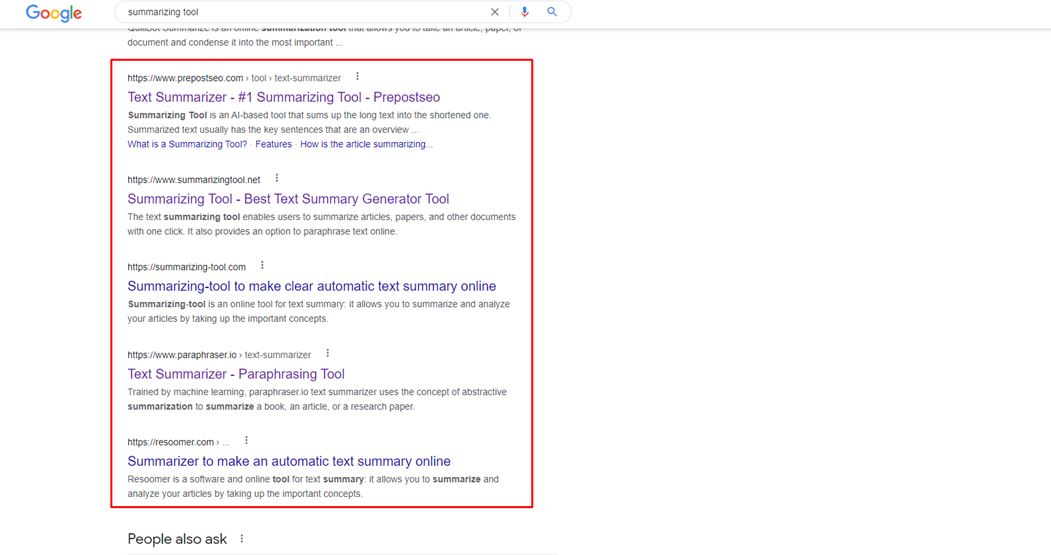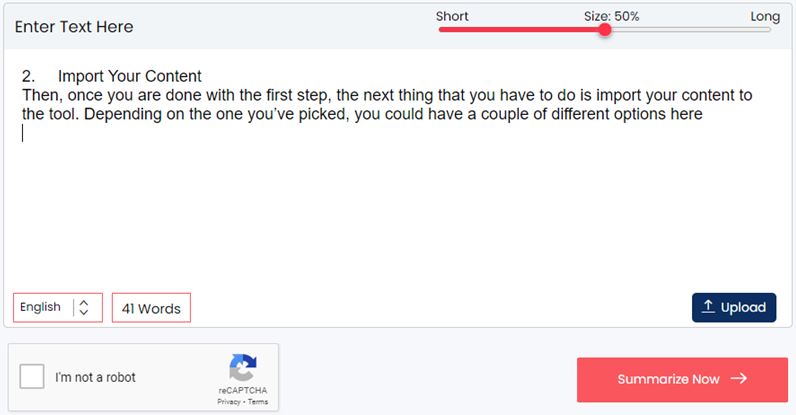Writing a summary is something that writers have to do pretty often. For example, in a lot of cases, the conclusion or the “Key Takeaways” section at the end of an article or blog post is more or less a summary of the entire content.
However, for some writers, coming up with a summary can be difficult and time-taking. It can just be too much of a hassle to go through the content again, pick the main points and then elaborate on them.
If you happen to be in this category, don’t worry. In this post, we’re going to be looking at how you can write an engaging summary using a summarizing tool…rather than the old conventional method.
Understanding Types of Summarization
The process of writing a summary with a summarizer is pretty simple and straightforward. However, before we get to that, we should clear up something first.
There are basically two types of summarizing methods. They are called abstractive and extractive.
In abstractive summarization, the aim is to understand the meaning and context of the given text and then come up with a summary in one’s own words and terms. In this type of summarization, the original words used in the text are not utilized directly.
On the other hand, in extractive summarization, the aim is to simply extract meaningful sentences from the given content and join them together in such a way that they convey the overall meaning albeit in a much reduced and shortened form.
When it comes to text summarizer tools, the method employed by the vast majority of them is the extractive method. There can be some rare cases where the tool intelligently understands the given content and then creates a summary on its own, but this is not normally seen.
Writing an Engaging Summary Using a Summarizing tool: The Process
Now that we’re done with the above, let’s move on to the actual process of writing a summary using a summarizing tool.
1. Pick a Summarizing tool
The first thing that you have to do is select a summarizer from the several available on the internet. You can just enter the words “summarizing tool” or “summarizer” in the search bar and press enter. You’ll see a whole bunch of them in the SERPs.

Another way that you can go about selecting a tool is to look for blog posts and articles with titles like “Best Summarizing Tools in 2022” or “Top Summarizing Tools for Bloggers” etc. In these types of articles and posts, you can usually find good tools.
2. Import Your Content
Then, once you are done with the first step, the next thing that you have to do is import your content to the tool. Depending on the one you’ve picked, you could have a couple of different options here.
In most tools, you can simply enter the content by direct typing or copy-pasting. Some can be more generous and they can also allow you to upload a file directly from your local storage.

3. Adjust the Settings
Then, after importing your content, you have to adjust the settings as per your need and requirement. By “settings”, we mean adjusting the summary length and the language.
In most tools, there is a slider that can be dragged to and fro. This usually decides the summary length by specifying a percentage.
If the tool you have chosen does not provide both of these features, then you can simply move on to start the process.
4. Check, Finalize and Save
Once the summary is generated, you should give it a quick look from top to bottom. This will help you see whether the tool missed mentioning a point or not.
If you are satisfied with the summary provided by the tool, you can go ahead and save it to your device. If you need to use it somewhere instantly, you can copy it over to your clipboard instead.
Conclusion
And that is pretty much it.
Writing a summary using an online tool is much quicker and easier than doing it manually. Of course, since it is the work of an automated algorithm, it does not have the intelligence and spontaneity of a human being.
When creating a summary using a tool, you should be particular about the checking phase. You should check and double-check the content to make sure that there is no sort of contextual discrepancy or abruptness in it.

